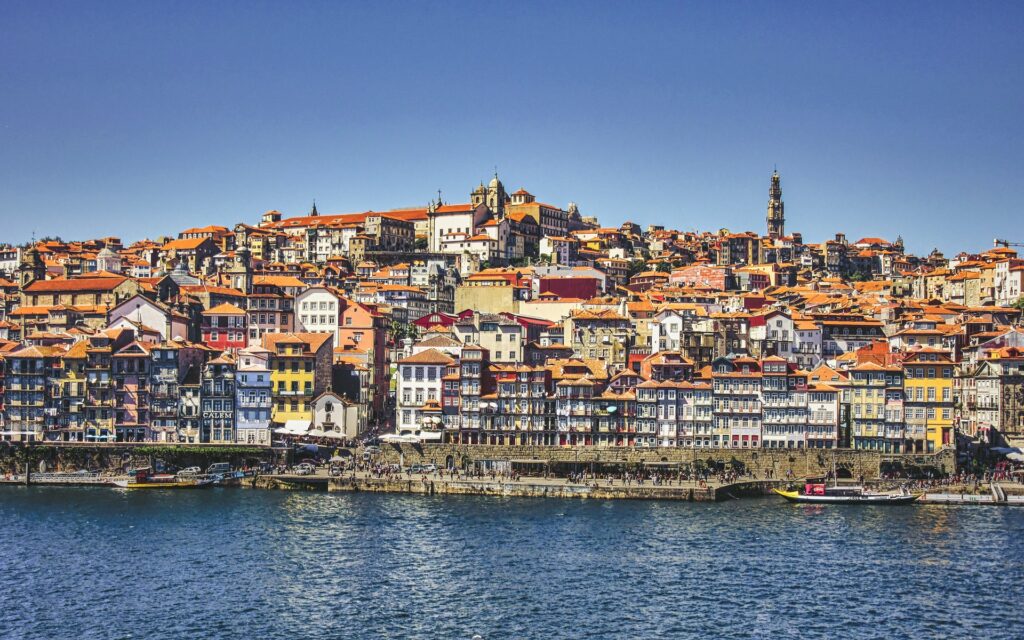If you’re a wine enthusiast, you’ve probably heard of port wine. Port wine is a fortified wine that is exclusively produced in the Douro Valley region of Portugal. This wine has a rich history that dates back centuries, and it has become a popular drink among many people worldwide.
The history of port wine is closely tied to the political and economic developments of Portugal. In the late 17th century, England and France were at war, and the British were looking for alternative sources of wine. They found a suitable candidate in Portugal, particularly in the Douro Valley region. The Douro Valley was already known for producing high-quality wines, and the British saw an opportunity to import these wines to England. However, the wines did not travel well, and they often spoiled during the long journey. To solve this problem, the British began adding brandy to the wine to stabilize it. This process of fortification gave birth to port wine, and it has been a popular drink ever since.
Port wine has a unique taste and aroma that sets it apart from other types of wine. It is usually served as a dessert wine and pairs well with cheese, chocolate, and other sweet treats. If you’re interested in learning more about the history of port wine, keep reading to discover its fascinating origins and how it became the iconic drink it is today.
Origins of Port Wine
If you’re a lover of sweet and robust wines, then you must have tasted Port wine at some point. Port wine is a fortified wine that is produced in the Douro Valley of northern Portugal. Its origins date back to the 17th century when British wine merchants began importing wine from Portugal. However, the story of Port wine is more complicated than that.
Port wine is made from a blend of Portuguese grapes, including Touriga Nacional, Tinta Roriz, and Touriga Franca. The grapes are grown on steep terraced hillsides in the Douro Valley, which is a UNESCO World Heritage site. The grapes are harvested by hand and transported to the wineries where they are crushed and fermented.
The fermentation process is what sets Port wine apart from other wines. To make Port wine, brandy is added to the wine before the fermentation process is complete. This stops the fermentation process and leaves residual sugar in the wine, which gives it its sweet taste. The brandy also increases the alcohol content of the wine, making it a fortified wine.
The history of Port wine is intertwined with the history of Portugal and Britain. In the 17th century, Portugal was one of the world’s leading wine producers. However, the wine was not very popular in Britain because it was prone to spoilage during the long sea voyages. To solve this problem, British wine merchants began adding brandy to the wine to preserve it. This resulted in the creation of fortified wine, which became known as Port wine.
In conclusion, the origins of Port wine are rooted in the history of Portugal and Britain. The wine is a product of the unique terroir of the Douro Valley and the ingenuity of British wine merchants. Today, Port wine is enjoyed all over the world and is considered one of the great wines of the world.
Evolution and Production
Grape Varieties
Port wine is made from a blend of several grape varieties, such as Touriga Nacional, Touriga Franca, Tinta Roriz, and Tinta Barroca. These grapes are grown in the Douro Valley region of Portugal, which has a unique microclimate that is ideal for grape cultivation.
Harvesting and Fermentation
Harvesting of the grapes usually begins in September and continues until October. The grapes are harvested by hand and transported to the wineries for fermentation. During fermentation, the grape juice is mixed with yeast to convert the sugars into alcohol. The fermentation process is stopped by adding brandy, which increases the alcohol content and gives the wine its characteristic sweetness.
Fortification Process
After the fermentation process is complete, the wine is fortified with brandy to increase its alcohol content. This also stops the fermentation process and preserves the sweetness of the wine. The fortified wine is then transferred to oak barrels, where it is aged for several years. The aging process gives the wine its unique flavor and aroma.
In the past, port wine was transported down the Douro River in barrels to the city of Porto, where it was stored in cellars and aged. Today, the wine is still aged in oak barrels but is transported by truck to Porto.
Overall, the production of port wine is a complex and time-consuming process that requires careful attention to detail. The result is a rich and flavorful wine that is enjoyed by people all over the world.
Classification and Styles
Port wine is a fortified wine that comes in various styles, each with its unique characteristics. In this section, we will explore the different styles of port wine.
Ruby Port
Ruby port is the most widely produced and consumed type of port wine. It is a young wine that is aged for two to three years in oak barrels. This wine is known for its vibrant red color, fruity flavors, and sweet taste. It pairs well with chocolate, cheese, and other desserts.
Tawny Port
Tawny port is a type of aged port wine that is matured in oak barrels for at least three years. This wine has a golden-brown color, nutty flavors, and a smooth texture. It pairs well with nuts, dried fruit, and caramel desserts.
Vintage Port
Vintage port is a high-quality port wine made from grapes harvested in a single year. It is aged in oak barrels for at least two years before being bottled and aged for several decades. This wine has a deep red color, intense fruit flavors, and a high alcohol content. It pairs well with strong cheeses, dark chocolate, and rich desserts.
Late Bottled Vintage Port
Late bottled vintage port is a type of port wine made from grapes harvested in a single year. It is aged in oak barrels for four to six years before being bottled. This wine has a deep red color, rich fruit flavors, and a smooth texture. It pairs well with blue cheese, dark chocolate, and roasted nuts.
In conclusion, port wine comes in various styles, each with its unique characteristics. Whether you prefer a young and fruity ruby port or a complex and aged vintage port, there is a port wine for every palate.
Geographical Influence
Port wine is a fortified wine produced in the Douro Valley of northern Portugal. The unique geography of this region plays a key role in the production of this wine.
Douro Valley Terroir
The Douro Valley is a rugged, mountainous region with steep slopes and terraced vineyards. The region’s hot, dry summers and cool, wet winters create the perfect conditions for growing grapes. The soil in this region is made up of schist, a type of metamorphic rock that is rich in nutrients and minerals. The schist soil gives the grapes grown in this region a unique flavor profile that is characteristic of port wine.
Port Wine Lodges
The aging and blending of port wine takes place in the port wine lodges located in the city of Vila Nova de Gaia, across the Douro River from Porto. These lodges are responsible for the final stage of the port wine production process, where the wine is aged in oak barrels for several years. The lodges also play a crucial role in the marketing and distribution of port wine.
In conclusion, the unique geography of the Douro Valley and the port wine lodges in Vila Nova de Gaia are essential to the production and aging of port wine. The terroir of the Douro Valley gives the grapes grown in this region a unique flavor profile, while the port wine lodges are responsible for the final stage of the production process and the marketing and distribution of this iconic wine.
Cultural Impact
Port Wine in Cuisine
Port wine has played a significant role in the culinary world. It pairs well with a variety of foods and is often used in cooking to enhance flavors. The sweetness of port wine can balance out the saltiness of cured meats, making it a popular pairing with charcuterie boards. It is also commonly used in sauces and marinades for meats, adding depth and complexity to dishes.
In Portugal, port wine is often served with dessert, such as a slice of traditional Portuguese custard tart, or “pastel de nata.” The sweetness of the wine complements the rich, creamy filling of the tart.
Global Trade and Expansion
Port wine has had a significant impact on global trade and expansion. The Douro Valley, where port wine is produced, was designated as the world’s first wine region in 1756. This designation helped to protect the region’s wine production and prevent counterfeiting.
Port wine became popular in England in the 17th century, and the English played a significant role in the expansion of port wine production. English merchants established relationships with Portuguese wine producers and helped to develop the infrastructure needed to produce and export port wine. The English also played a role in the development of the port wine industry in the Douro Valley, helping to build roads and bridges to transport wine barrels.
Today, port wine is exported to countries all over the world, including the United States, Canada, and China. The wine has become a symbol of Portuguese culture and heritage, and continues to be an important part of the country’s economy.
Frequently Asked Questions
Who first made port wine?
Port wine was first made in the Douro Valley region of Portugal in the late 17th century. It is believed that British wine merchants were responsible for the creation of this fortified wine, as they were seeking a way to preserve wine during transportation.
Why is port wine called ‘Port’?
Port wine is called ‘Port’ because it was historically produced and shipped from the city of Porto, located in the northern region of Portugal.
What is the historical reason behind brandy being added to port wine?
Brandy is added to port wine during the fermentation process in order to halt the process and preserve the natural sweetness of the grapes. This fortification process was developed in the 18th century as a way to improve the quality and longevity of the wine during transportation.
What are the different types of port wine available?
There are several different types of port wine available, including Ruby, Tawny, Vintage, Late Bottled Vintage (LBV), and White. Each type of port wine has its own unique characteristics and flavor profiles.
Can you describe a brief timeline of the history of port wine?
Port wine was first created in the late 17th century in the Douro Valley region of Portugal. It quickly gained popularity in England and became a staple in British culture. In the 18th century, the fortification process was developed to improve the quality and longevity of the wine during transportation. Throughout the 19th and 20th centuries, the popularity of port wine continued to grow, with many famous brands and styles being developed.
What makes port wine unique compared to other fortified wines?
Port wine is unique compared to other fortified wines because it is made from a specific blend of grapes grown in the Douro Valley region of Portugal. The fortification process used in the production of port wine also gives it a distinct flavor profile that sets it apart from other fortified wines.


